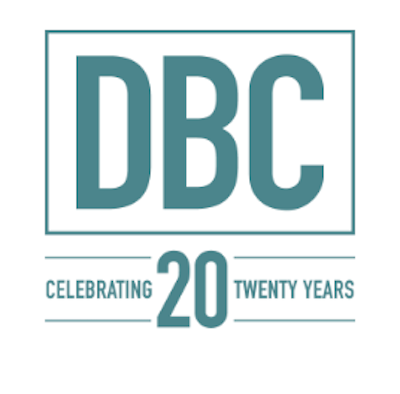A colleague had a great description of brand: The brand is the solution.
The brand is not the final output of graphics and logos but the clear and consistent value proposition that comes through the “what,” to the way it’s delivered, all the way until the experience matches the promise that the company makes via its brand.
The new ways of marketing (community, social networking, influencers) in Web 2.0 have changed how companies deliver and communicate their brand. But the fundamentals remain the same. Brands must integrate all their activities into a cohesive customer experience at every touch point. Because each connection drives brand perception and loyalty, marketers must ask themselves, “Is this how I would want to be treated if I were the customer?”
This question begs for a review of exactly what a brand is and how it fulfills the promise of a business. Establishing a high-value brand is one of the most subtle and difficult aspects of marketing. It’s a corporate asset, when done well – a symbol or cohesive glue that binds all company actions and consumer perceptions together.
A company builds its brand by
1) knowing itself. The company must have a deep understanding of what it is today and what it can do to shape the future. It acts consistently over an extended period of time and carefully guides its customers step by step with new products and services as market conditions and needs change.
2) communicating. Clear, consistent, and meaningful value propositions must be communicated over a period of years, until they achieve a critical mass. The brand then stands for something that is valued by consumers.
3) delivering. Companies must deliver on the promises made in value propositions. The products and services must always perform as expected; this consistent delivery is the basis for binding relationships with consumers. The company logo becomes a symbol for quality and other positive attributes, such as trustworthiness and reliability.
This time-tested approach to brand development has built categories and markets by providing the best products at a given price. Consumers have responded by relying on brand names as a purchase decision short cut, when there is too much choice or when they make their first purchase in a new product category. It protects them against risk by standing for a quality experience. When product differentiation is lost or confused, a brand makes the choice easy.
The new rules for engaging customers, however, have raised the performance standard beyond delivering a great product they trust that will perform as expected. To be competitive, brands must now add two more consumer requirements to the traditional mix:
4) process benefits. How powerful is a brand in the new purchasing scenarios? MySpace, for example, has added a music store to test its e-commerce legs. Purchases can be made directly from a musician’s or group’s profile page. As distribution channels continue to proliferate, process benefits become a more important element of the purchase decision. Transactions must be easier, quicker, cheaper, more informative, or more pleasant. Given the availability of information on the Internet, consumers can instantly find out the lowest-cost provider. But we all know price is not always the only purchase decision determinate. Consumers may be willing to pay a premium when other needs, such as convenience or service, are met. Answering the phone on the second ring, quick access to a human who can resolve issues, or being able to return goods very quickly, without question or hassle, are just a few process benefits.
5) relationship benefits. How meaningful is a brand when it no longer controls information? Building relationships with consumers was more simplistic when the flow of information was one way: brand to consumer. The traditional approach solicited consumer input selectively. The primary and most often only communication with customers was through media that could support only passive spectatorship. With the proliferation of interactive media channels, the emerging participatory culture requires much more from a brand to establish a meaningful, long-term relationship.
Brands must now fulfill the consumers’ need to feel valued and heard through responsive interchange at every product touch point. This includes the touch points outside the brand’s control, such as blogs. Two-way communication is a powerful new tool that brands can use to design and create offers and incentives. We all know digital media are unequaled in facilitating communications with individuals. In return the brand must respond to the customer’s interest with opportunities for extensive dialogue, as well as with information and entertainment.
To rise above all the clutter, brands will be expected to imagine, create, and finance innovative formats of interactive marketing and advertising. Warner Bros. is launching the Studio 2.0 division to create original, short-form broadband and mobile content for marketers. Unilever’s I Can’t Believe It’s Not Butter brand created a seven-Webisode crime drama that stars a blond margarine spray bottle. As Internet-based digital media becomes cinematic, the range of media and consumer experiences is becoming almost as limitless as the number of Web pages. Exploring and shaping new types of experiences, such as multiplayer online games, may lead to formats we can’t even begin to image yet, such as Internet protocol television.
The massive shifts in social behaviors, enabled by technology, are no longer hollow threats. The monolithic mass market has eroded, making the traditional approach to marketing obsolete. As social behaviors continue to evolve, so must the capabilities of marketing professionals. The good news is that there are guidelines for brands during this period of flux and experimentation. Viewing the business value chain with fresh eyes and making strides to integrate it seamlessly are the first steps. As the new rules emerge, we propose the most successful brands will be measured by five attributes:
1) heritage. Or to put it another way, continuity from the past. The ideal brand will always evolving but will have lasting value. Heritage will be a symbol for quality.
2) authenticity. This entails developing and maintaining honest relationships with consumers, even when the company fails to deliver on promises. This is a basis for dialogue, trust, and brand loyalty. An authentic company’s products and services have emotional relevance for consumers.
3) technology. The best brands will extend the brand experience through new engagement platforms and distribution channels.
4) innovation. Leading brands will define new categories, markets, or ways of doing things, including customer engagement.
5) interdimensional market power. In other words, meaningful engagement with customers at every touch point, integrating the entire business value chain, to provide a cohesive, interactive brand experience.
Our new playing field is bigger, broader, and more challenging. For brands that master the new rules, the opportunities are virtually limitless.
Nilofer Merchant is CEO of Rubicon Consulting, a strategic marketing firm based in Los Gatos, CA.



